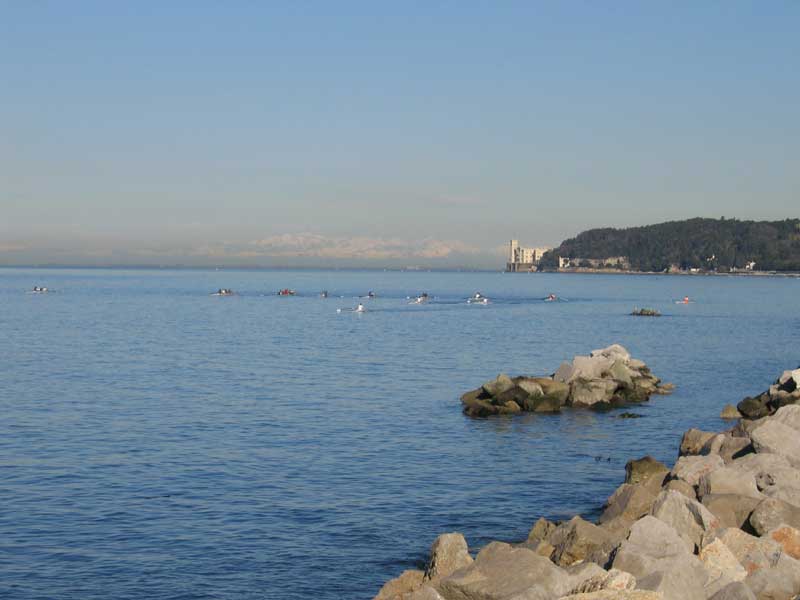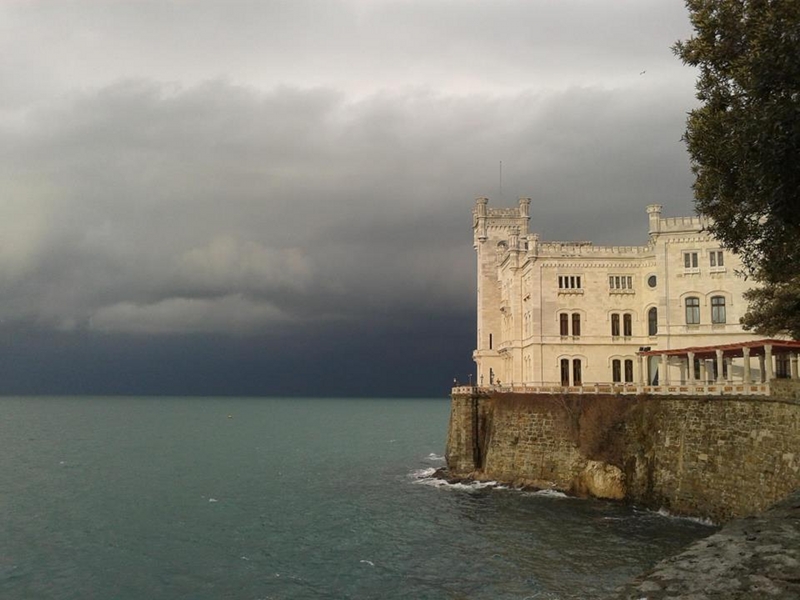Area Marina Protetta di Miramare
www.riservamarinamiramare.itPoints of Interest
The Gulf of Trieste
The coast characterizing the Gulf of Trieste is varied and indented: gravelly and pebbly beaches alternate with rocky complexes forming small boulder archipelagos. From Monfalcone to Trieste the coastline is almost straight, not very high but rocky, with a rich vegetation similar to the Mediterranean maquis. From the town of Trieste, the coastal arch bends in Muggia and Capodistria, forming deep gulfs where the low coast, covered with beaches, alternate with the fairly high and rocky coast in a succession of inlets, small bays, and cliffs.
The rocks are typical of Carso and reach the sea; they are covered by an extraordinary Mediterranean vegetation, in which myrtle, oleanders, brooms, ilex trees, cypress trees, maritime pines, olive trees, fig trees, elders, rosemary and laurels are mixed.
The rocky wall, covered by a thick vegetation, can be explored by following its steep trails. From above, you can enjoy westwards a beautiful view over the mouth of river Isonzo, with Isola della Cona; on the right, Duino castle dominates the gulf from the white promontory overhanging the sea; going ahead, you will meet the 19th century Miramare Castle surrounded by the nature of the park, with the marine area in front of it, and then Trieste and Istria, with Punta Salvore at its westernmost extremity.
Miramare Castle
It is an eclectic-style structure built between the years 1856 and 1860 according to the will of archduke Maximilian of Habsburg - who later became the emperor of Mexico - on a project by Carl Junker. It preserves in its interior the original furnishing and decorations. A large park (22 hectares) laying down on the seashore was created by the client on a bare promontory, with several botanic essences of tropical origin.
Within the castle it is possible to visit Maximilian and his wife Charlotte's apartments, the rooms for guests, the educational hall illustrating the history of the building of Castle and Park, the apartment in which Duke Amedeo d'Aosta lived, with furnishing dating back to 1930 in a rationalist style. Worth a mention: the room dedicated to the music played by Charlotte on the fortepiano displayed in room VII; the collection of paintings by Cesare dell'Acqua, telling the story of Miramare in room XIX and the throne room which has been recently restored and brought back to its ancient splendor.
The Park offers to the public the opportunity to have an interesting botanic walk, during which you will admire an important collection of sculptures decorating the alleys. Moreover, you can also visit the Stables, which have been recently restored and house today temporary exhibits, the Ancient Greenhouses, and the "Castelletto" preserving part of the original decoration which can still be found on the first floor.









